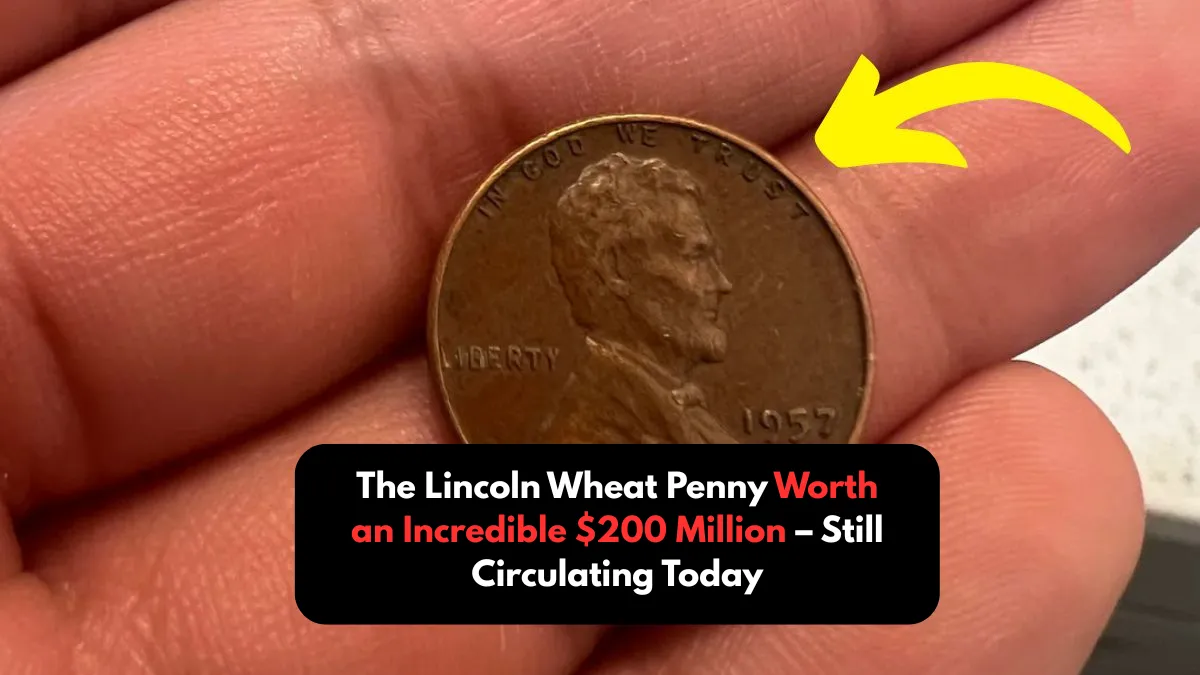You may want to look again at the pennies that are moving around in your box. You never know, one of them might be worth more than you thought. Although many Lincoln Wheat Pennies have been made over the years, there is one that is so uncommon that collectors think it could be worth as much as $200 million. It could still be out there, hidden in regular change.
Here is the story behind this unique coin. Find out what makes it so valuable and how to find one.
What Is the Lincoln Wheat Penny?
The Lincoln Wheat Penny is a well-known and cherished piece of American coinage. It made its debut in 1909 and was notable for being the first coin in U.S. history to depict an actual person—President Abraham Lincoln—on the front. On the reverse side, the coin featured two stalks of wheat curving along the edges, which gave rise to the popular nickname “Wheat Penny.”
These pennies were produced until 1958, and while most were minted in large quantities, only a few are considered rare today. The ones that stand out typically involve errors or unusual materials, which makes them highly sought after by collectors.
Why One Wheat Penny Is Worth $200 Million
Among the many versions of the Lincoln Wheat Penny, one stands out as incredibly rare and possibly the most valuable penny ever made: the 1943 bronze Wheat Penny. During World War II, the U.S. Mint opted to produce pennies from zinc-coated steel to conserve copper for the war effort. However, a few bronze planchets—leftover from 1942—were mistakenly used in the minting process.
This resulted in a very limited number of 1943 pennies being made from bronze instead of steel. These coins are now extremely scarce, and the mystery surrounding their accidental creation has fueled their legendary status. It’s believed that if a pristine 1943 bronze penny were to surface—especially one with unique features—it could fetch up to $200 million at auction due to its historical significance and extreme rarity.
How to Spot a $200 Million Lincoln Penny
You don’t need expert equipment to identify this rare coin—just a keen eye and a bit of knowledge. The first thing to examine is the date. All standard 1943 pennies are made of steel and have a gray, metallic appearance. But if your 1943 penny has a copper or brownish tone, that’s your first clue. Next, try the magnet test: steel coins will stick to a magnet, while a bronze penny will not.
The color is another giveaway—bronze has the typical copper tone, unlike the shiny surface of steel pennies. Don’t forget to check for a mint mark just below the date. A “D” means it was made in Denver, “S” in San Francisco, and no mark means it came from Philadelphia. A 1943 bronze penny with a mint mark is even rarer than one without, which could increase its value significantly.
Could One Still Be in Circulation?
As unlikely as it may seem, it is possible that one of these rare bronze 1943 pennies could still be out there. These coins have occasionally been discovered in everyday places—like a jar of old coins, a drawer full of loose change, or an inherited collection.
Because it closely resembles a regular copper penny, many people may not recognize its true worth and could spend it without realizing. The thought that a coin of such value could be hiding in plain sight adds to the excitement and makes coin hunting a thrilling hobby for enthusiasts and casual collectors alike.
What Should You Do If You Think You’ve Found One?
If you come across a 1943 penny that doesn’t look like the standard steel version, there are a few important steps to follow. First, do not clean the coin—this can decrease its value dramatically. Perform a magnet test to see if it sticks. If it doesn’t, there’s a chance it could be one of the rare bronze examples.
The next step is to take it to a professional coin dealer or a recognized grading company like PCGS (Professional Coin Grading Service) or NGC (Numismatic Guaranty Corporation). They can verify its authenticity and provide a professional appraisal. With proper authentication, you might discover that your find is truly extraordinary.
Final Thoughts: A Tiny Coin, a Massive Fortune
Though it’s just a small piece of metal, the Lincoln Wheat Penny—especially the ultra-rare 1943 bronze version—can hold immense value. It’s a reminder that history and wealth can sometimes be found in the most overlooked places. With a potential value of up to $200 million, this coin represents one of the greatest finds a collector could hope for.
So, the next time you get change from a store or sift through an old coin jar, take a second look. You might be holding a treasure that has not only historical importance but also life-changing financial potential.
